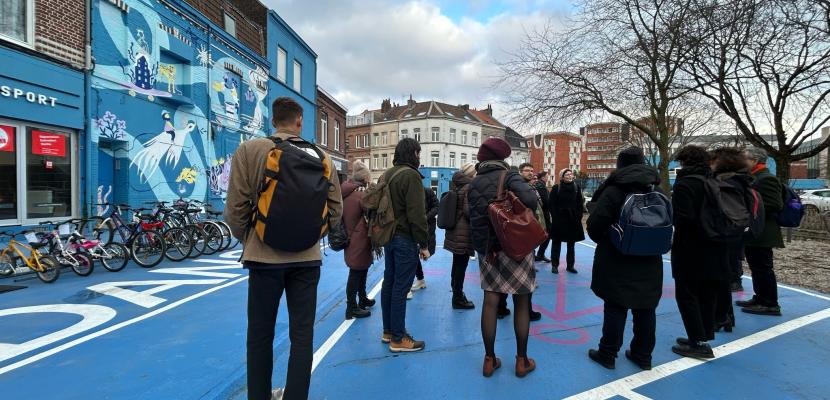
Transitional development of Jacques Febvrier Square in Lille

About this good practice
The square is the subject of a tactical transitional urban planning project, pending a more comprehensive redevelopment of this city entrance and aims to rapidly remedy deep-seated dysfunctions. Part of the broader New NPNRU, it responds to challenges like space degradation, vacant buildings, and spatial social issues in a run-down neighbourhood.
The project is coordinated by a partnership involving the City of Lille, MEL, ANRU, SPLA La Fabrique des Quartiers, Établissement Public Foncier Hauts de France, Région Hauts de France, and Action Logement. Stakeholders include residents, associations, M. Bertrand social centre, and M. Makeba public secondary school.
The project's goal, through the restoration of urban quality and the promotion of pedestrianisation and soft transport, is to reclaim the square by taking action on several fronts: adapting public spaces to counteract their current function and reintroduce positive uses; restructuring buildings and the housing offer; and establishing local services and commercial activities, particularly in the social economy.
Implementation involves phased reactivation of ground floors, calls for expressions of interest, temporary layout adjustments, and artistic interventions. Landscape enhancements include greenery, the co-production with local partners ensures inclusive decision-making through information, consultation and co-production sessions and festive events.
Expert opinion
Resources needed
24,8M€ (Perimeter Lille - Lille Quartiers Anciens - Recycling run-down housing - Febvrier-Vanhoenacker), with financial contributions from the City of Lille, MEL, EPF Hauts de France, ANRU
Evidence of success
While the evaluation assessment of Jacques Fébvrier square is still in progress, the existing evaluation framework of the New National Urban Renewal Program by the Métropole européenne de Lille provides valuable indicators. The project has successfully engaged residents, associations, and schools, demonstrating a strong commitment to community involvement.
Potential for learning or transfer
The project is an example of tactical urbanism with potential for transfer to other regions due to its collaborative, community-driven and multi-stakeholder approach. The establishment of local services and commercial activities, particularly those within the social economy, highlights a relevant approach to urban regeneration. Other regions and cities could benefit from investigating how temporary agreements with private entities for commercial management are established. Recognising the crucial role of commercial activities in urban well-being is essential, and understanding and addressing this role also enables tackling safety challenges associated with vacant spaces, especially in public areas. The use of temporary layouts (pedestrian areas) and artistic interventions as part of the project's implementation strategy is also very relevant.

